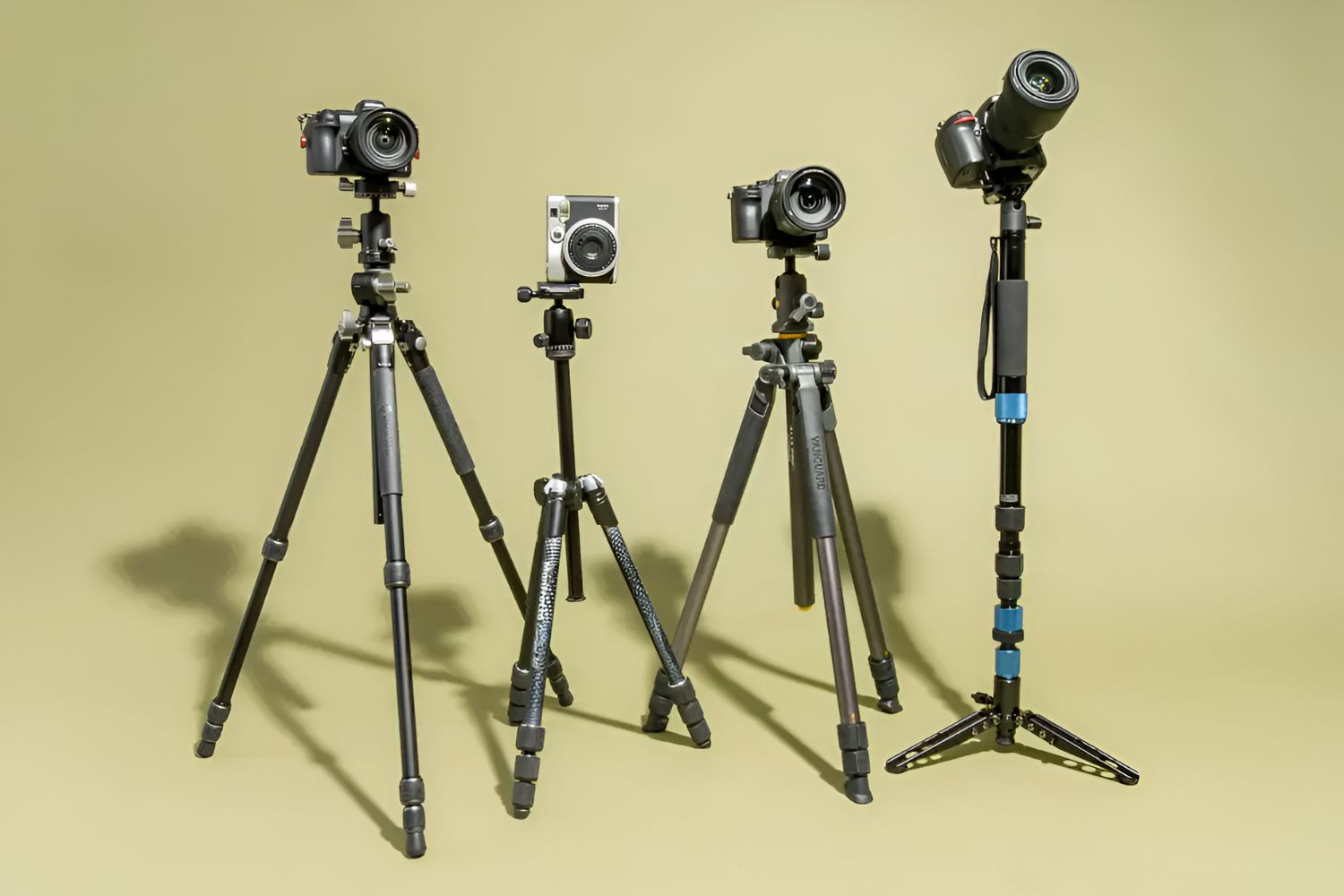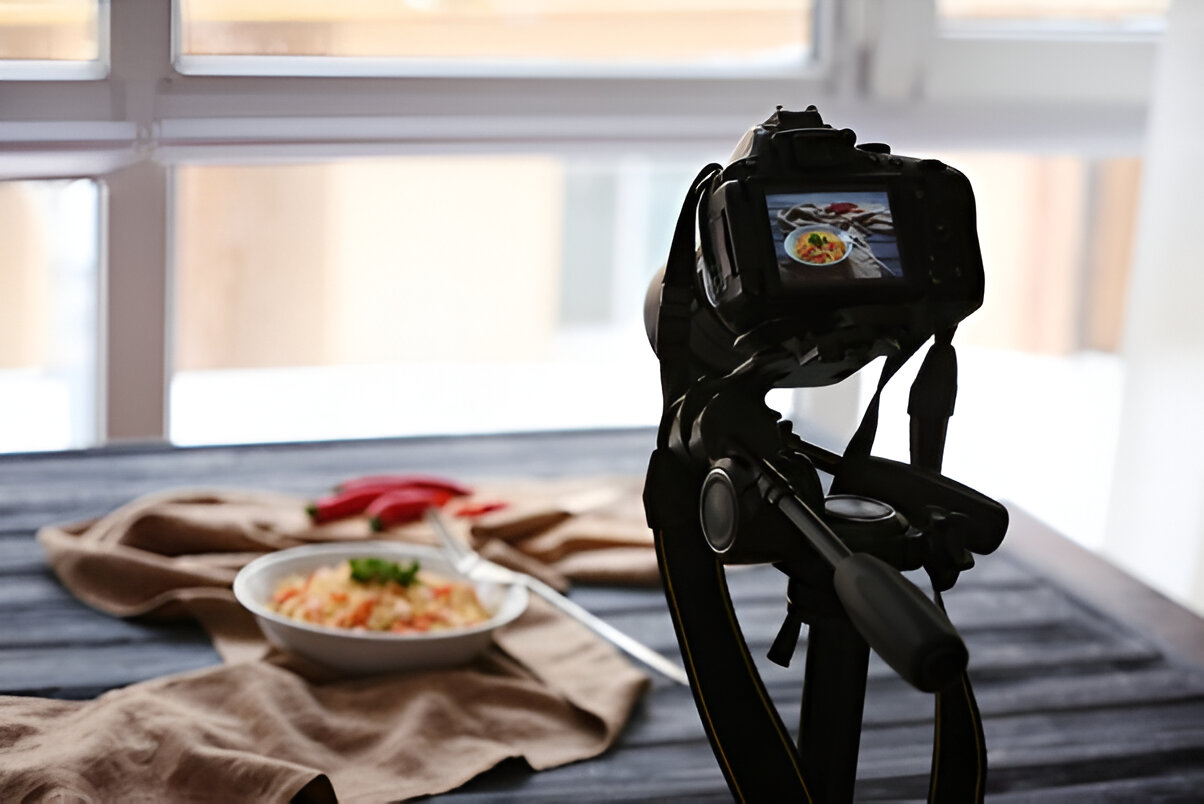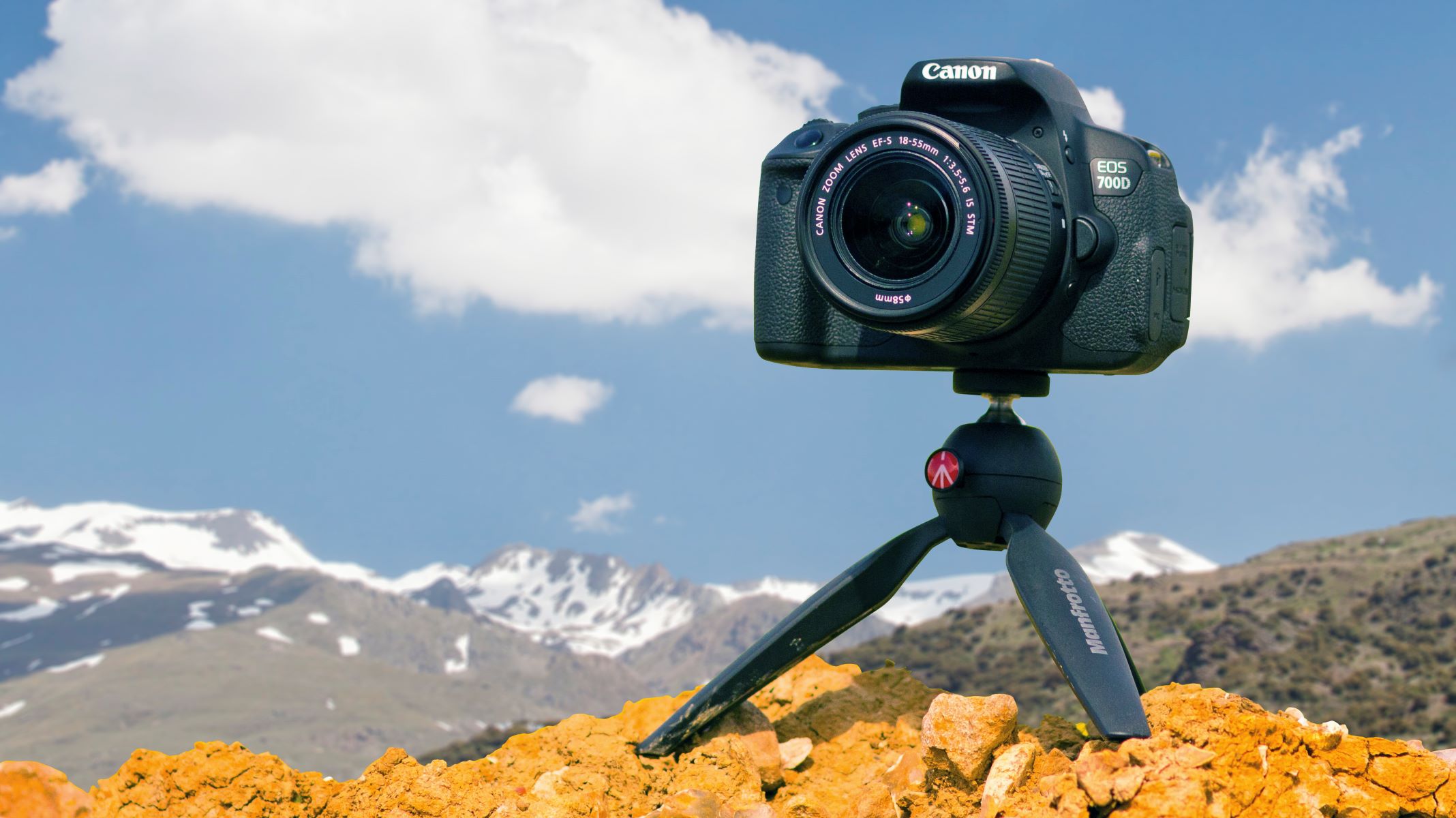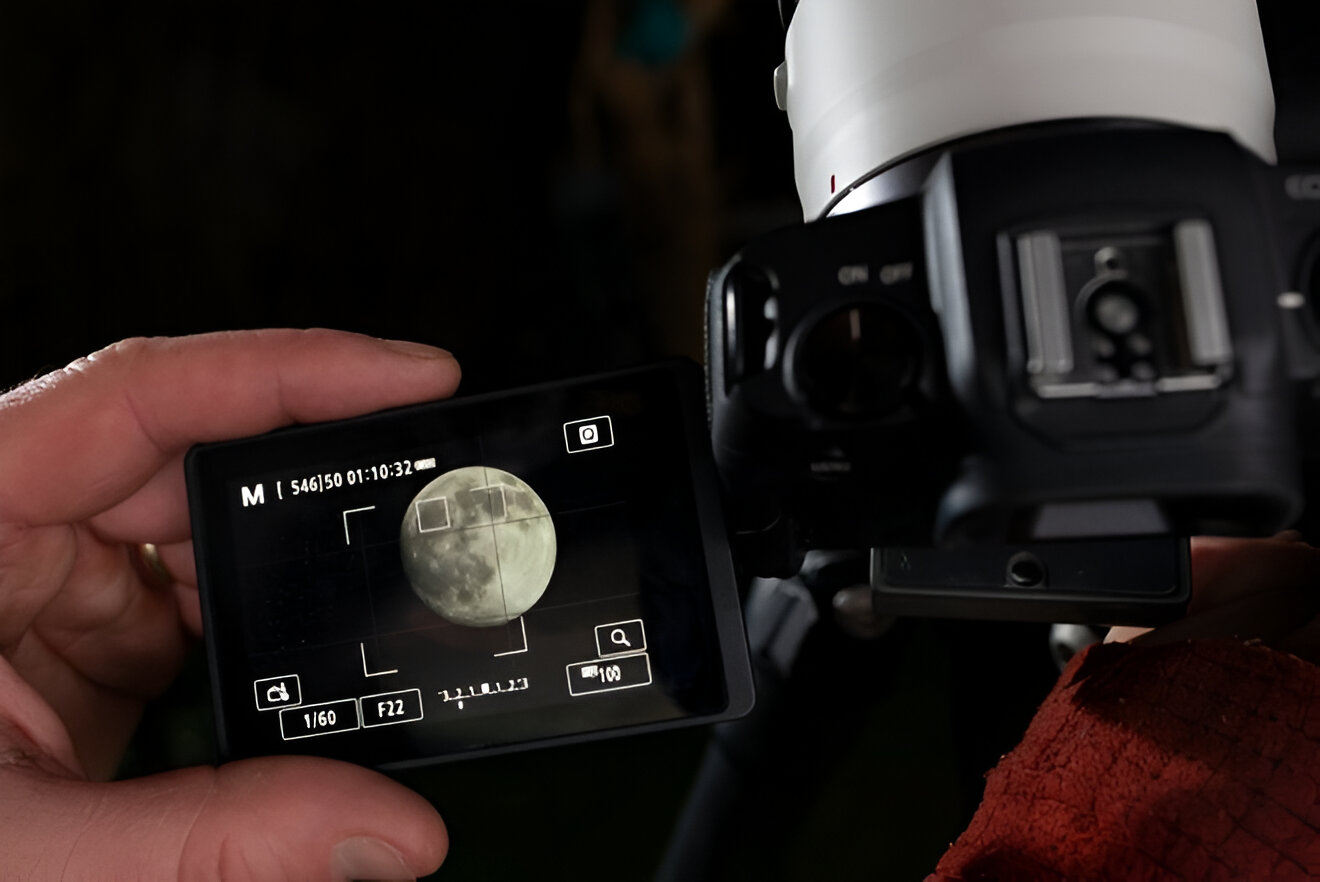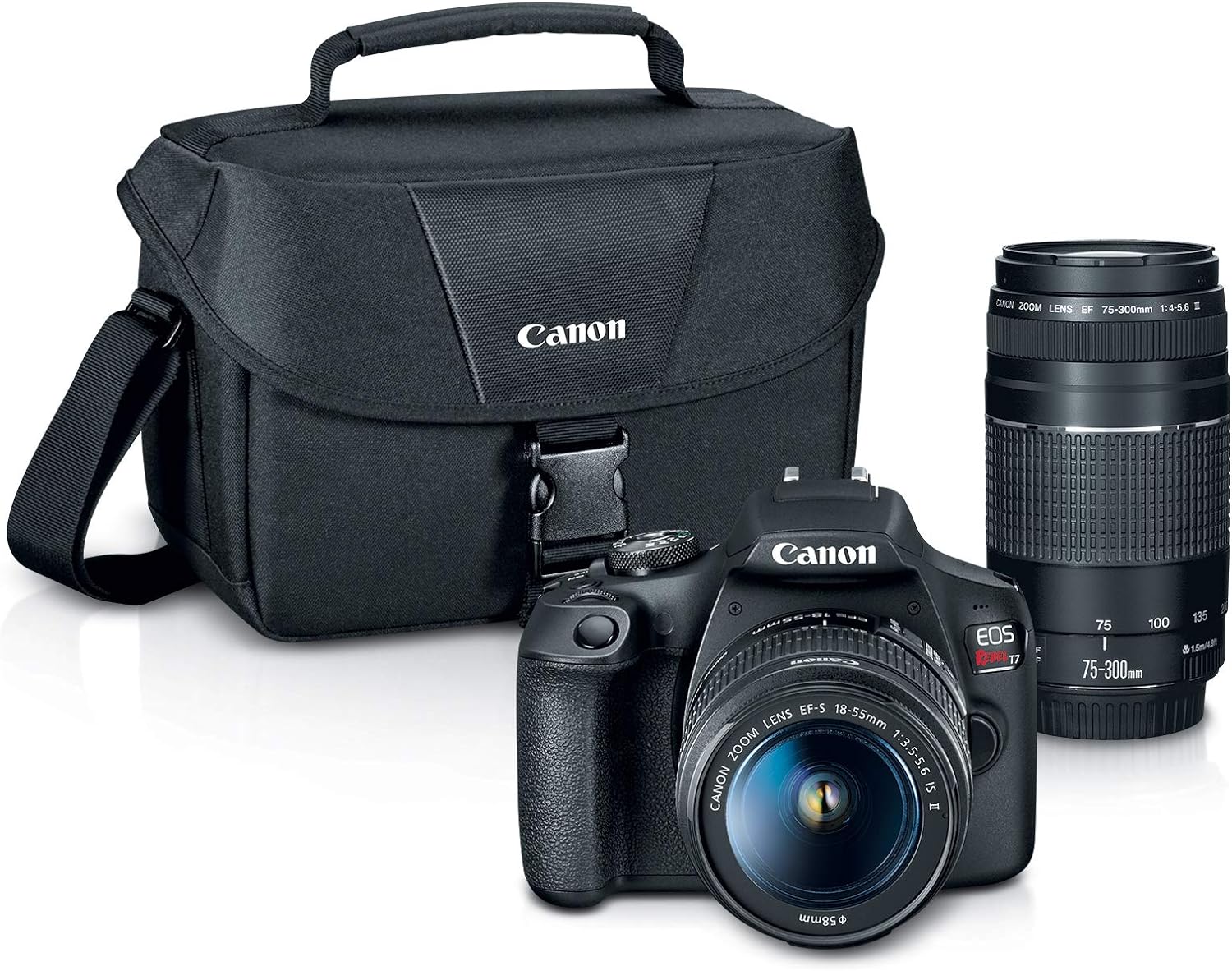Introduction
So, you've finally decided to take your photography to the next level by investing in a DSLR camera. Congratulations! Owning a DSLR opens up a world of creative possibilities and allows you to capture stunning, high-quality images. However, to truly maximize the potential of your DSLR, you'll need a reliable tripod. A DSLR camera tripod is an essential accessory for any photographer, whether you're a professional or an enthusiastic hobbyist. It provides stability, flexibility, and precision, enabling you to capture sharp, shake-free images in various shooting conditions.
Choosing the right DSLR camera tripod can be a daunting task, especially with the myriad of options available in the market. From compact travel tripods to heavy-duty studio stands, the choices can be overwhelming. But fear not! This comprehensive guide will walk you through the essential considerations, types, features, and top brands of DSLR camera tripods. By the end of this article, you'll be equipped with the knowledge to make an informed decision and find the perfect tripod to complement your DSLR.
A good DSLR camera tripod is not just a stand to hold your camera; it's a tool that enhances your photography experience. Whether you're shooting landscapes, portraits, long exposures, or time-lapse sequences, a high-quality tripod can make a world of difference. It provides stability for long exposures, allows for precise framing and composition, and opens up creative possibilities such as low-angle and elevated shots. Moreover, using a tripod encourages a deliberate approach to photography, leading to more thoughtful and carefully composed images.
Before delving into the specifics of choosing a DSLR camera tripod, it's crucial to understand the factors that differentiate tripods and how these elements can impact your photography. From the materials used to the design and features, each aspect plays a vital role in determining the suitability of a tripod for your specific needs. So, let's embark on this enlightening journey to uncover the secrets of selecting the perfect DSLR camera tripod that will elevate your photography to new heights.
Considerations for Choosing a DSLR Camera Tripod
When it comes to selecting a DSLR camera tripod, several crucial considerations should influence your decision. Understanding these factors will help you narrow down the vast array of options and pinpoint the tripod that best aligns with your specific photography requirements. Here are the key considerations to keep in mind:
- Stability: One of the primary purposes of a tripod is to provide stability for your camera. Consider the weight and size of your DSLR, as well as the types of environments in which you’ll be shooting. If you frequently capture outdoor landscapes in windy conditions, a sturdy, heavy-duty tripod is essential. For travel and on-the-go photography, a lightweight yet stable tripod is more practical.
- Height and Weight: The height and weight of a tripod are crucial factors, especially if you have specific shooting preferences. Taller photographers may require a tripod with extended height to avoid hunching over, while compact tripods are ideal for travel and street photography. Additionally, the weight of the tripod impacts its portability, so consider your willingness to carry it on outdoor excursions.
- Material: Tripods are commonly constructed from aluminum, carbon fiber, or a combination of both. Aluminum tripods offer durability at an affordable price, while carbon fiber tripods provide superior strength and vibration dampening, making them ideal for professional use. Consider the trade-offs between weight, cost, and performance when choosing the material.
- Head Type: The tripod head is where your camera attaches, and it plays a significant role in the flexibility and precision of your shots. There are various head types, including ball heads, pan-tilt heads, and gimbal heads, each suited for different shooting styles. Ensure that the tripod you choose has a compatible and reliable head that meets your specific needs.
- Leg Locking Mechanism: The leg locking mechanism determines the speed and convenience of setting up and adjusting your tripod. Twist locks and flip locks are the two primary types, with each offering distinct advantages. Evaluate the ease of use and stability provided by the leg locking system before making a decision.
By carefully considering these factors, you can narrow down the extensive range of DSLR camera tripods to a selection that aligns with your shooting style, preferences, and budget. Remember that the right tripod is not just an accessory; it’s a valuable tool that enhances the quality and creative potential of your photography.
Types of DSLR Camera Tripods
When exploring the world of DSLR camera tripods, it’s essential to familiarize yourself with the various types available, each designed to cater to specific shooting scenarios and preferences. Understanding the distinct characteristics of these tripod types will enable you to make an informed choice based on your photography needs. Here are the primary types of DSLR camera tripods:
- Compact Travel Tripods: Ideal for photographers who are frequently on the move, compact travel tripods are lightweight, portable, and designed for easy transportation. These tripods often feature foldable legs and a compact form factor, making them suitable for travel photography, street photography, and outdoor adventures where mobility is key.
- Studio or Professional Tripods: Designed for stability and precision, studio or professional tripods are built to handle heavy DSLR setups and provide exceptional stability for studio and indoor photography. These tripods are often taller, sturdier, and equipped with advanced features such as geared center columns and robust leg locks to support professional-grade equipment.
- Tabletop Tripods: As the name suggests, tabletop tripods are compact, low-profile supports that are perfect for placing your DSLR on elevated surfaces or capturing shots from unique angles. These tripods are convenient for macro photography, product photography, and situations where a full-sized tripod is impractical.
- Flexible or GorillaPod Tripods: Known for their versatile and adaptable design, flexible or GorillaPod tripods feature bendable legs with rubberized grips, allowing them to be wrapped around objects or positioned on uneven surfaces. These tripods are popular among vloggers, outdoor enthusiasts, and creative photographers seeking unconventional shooting perspectives.
- Monopods: While not traditional tripods, monopods are single-legged supports that offer stability and mobility for DSLR shooters. They are particularly useful for sports, wildlife, and event photography, providing a balance between support and freedom of movement in dynamic shooting environments.
Each type of DSLR camera tripod serves a distinct purpose and caters to specific shooting styles and environments. Understanding the characteristics and intended use of these tripod types will empower you to select the most suitable option for your photography endeavors. Whether you prioritize portability, stability, versatility, or specialized functionality, there’s a tripod type tailored to meet your unique requirements.
Features to Look for in a DSLR Camera Tripod
When embarking on the quest to find the perfect DSLR camera tripod, it’s essential to assess the array of features that distinguish one tripod from another. These features play a crucial role in enhancing the functionality, versatility, and overall performance of the tripod, ensuring that it aligns with your specific photography needs. Here are the key features to consider when evaluating DSLR camera tripods:
- Load Capacity: The load capacity of a tripod refers to the maximum weight it can support without compromising stability. It’s imperative to choose a tripod that can comfortably accommodate the weight of your DSLR, along with any additional accessories such as heavy lenses or external flashes, to prevent any risk of instability or damage to your equipment.
- Leg Sections and Extension: The number of leg sections and their extension capability directly impact the tripod’s compactness, height range, and setup speed. Tripods with more leg sections offer greater flexibility for adjusting the height and folding down to a compact size for transportation, while fewer leg sections may provide quicker setup but with reduced height options.
- Center Column: Some tripods feature a center column that can be raised or lowered to adjust the camera’s height. Look for tripods with a reversible or removable center column, as this feature enables low-angle shooting and macro photography by positioning the camera closer to the ground without compromising stability.
- Leg Angle Adjustments: Tripods with adjustable leg angles offer versatility in adapting to uneven terrain and capturing shots from low angles. Look for tripods with independently adjustable leg angles, allowing you to set up the tripod on uneven surfaces or achieve creative perspectives with ease.
- Quick Release System: A reliable quick release system facilitates swift and secure attachment and detachment of your DSLR to the tripod. Look for tripods with a compatible quick release plate that enables seamless mounting and dismounting of your camera, promoting efficiency during shoots.
- Feet and Spikes: The type of feet on a tripod impacts its stability on different surfaces. Rubber feet provide traction and prevent slippage on smooth floors, while retractable spikes offer enhanced grip on soft ground or outdoor terrain, ensuring stability in diverse shooting environments.
By prioritizing these features and evaluating their relevance to your photography style and preferences, you can make an informed decision when selecting a DSLR camera tripod. Each feature contributes to the overall functionality and usability of the tripod, ultimately enhancing your photographic capabilities and enabling you to capture stunning images with confidence and precision.
Top Brands for DSLR Camera Tripods
When it comes to investing in a DSLR camera tripod, choosing a reputable and trusted brand can significantly impact the quality, durability, and performance of your photographic equipment. Several renowned brands have established themselves as leaders in the tripod industry, consistently delivering innovative designs, superior build quality, and versatile features. Here are some of the top brands known for producing exceptional DSLR camera tripods:
- Manfrotto: Recognized for its premium build quality and extensive range of tripods, Manfrotto offers a diverse selection suited for various photography disciplines. From lightweight travel tripods to professional-grade studio stands, Manfrotto’s tripods are revered for their reliability, stability, and innovative features such as quick power locks and ergonomic designs.
- Gitzo: Renowned for its commitment to precision engineering and uncompromising quality, Gitzo produces high-end carbon fiber tripods that cater to discerning photographers. Gitzo tripods are celebrated for their exceptional stability, vibration damping properties, and ergonomic design, making them a top choice for professionals and enthusiasts seeking uncompromising performance.
- Vanguard: With a focus on combining advanced technology and user-friendly features, Vanguard offers a wide range of tripods suitable for diverse shooting scenarios. Vanguard tripods are known for their durability, versatility, and innovative designs, including multi-angle center columns, quick-flip leg locks, and advanced ball heads, catering to photographers of all levels.
- Benro: Emphasizing a perfect balance of performance and value, Benro manufactures a comprehensive lineup of tripods that prioritize stability, portability, and intuitive functionality. Benro tripods are designed to meet the demands of photographers across different genres, featuring options such as convertible tripods, carbon fiber construction, and precision-engineered ball heads.
- Joby: Famed for its flexible and adaptable GorillaPod tripods, Joby caters to photographers seeking unconventional shooting angles and versatile support solutions. Joby’s GorillaPod tripods feature bendable legs with rubberized grips, providing unmatched flexibility for vloggers, content creators, and outdoor enthusiasts looking to elevate their creativity.
These esteemed brands have consistently demonstrated a commitment to excellence, innovation, and user-centric design, earning the trust and admiration of photographers worldwide. Whether you prioritize lightweight portability, uncompromising stability, or versatile functionality, these top brands offer a diverse range of DSLR camera tripods to meet your specific requirements and elevate your photography to new heights.
Conclusion
Choosing the right DSLR camera tripod is a pivotal decision that significantly impacts the quality and versatility of your photography. By considering essential factors such as stability, height, material, head type, and leg locking mechanism, you can narrow down the myriad of options and pinpoint a tripod that aligns with your specific shooting requirements.
Understanding the diverse types of DSLR camera tripods, including compact travel tripods, studio or professional tripods, tabletop tripods, flexible or GorillaPod tripods, and monopods, empowers you to select a tripod tailored to your shooting style and preferences. Each tripod type serves a distinct purpose, catering to various environments and creative demands.
When evaluating DSLR camera tripods, prioritizing features such as load capacity, leg sections and extension, center column versatility, leg angle adjustments, quick release systems, and feet and spikes enables you to make an informed choice that enhances the functionality and usability of your tripod.
Furthermore, exploring the top brands known for producing exceptional DSLR camera tripods, including Manfrotto, Gitzo, Vanguard, Benro, and Joby, provides insight into the diverse range of options available, each characterized by superior build quality, innovative features, and uncompromising performance.
Ultimately, the journey to finding the right DSLR camera tripod is an enlightening exploration of your unique photography needs and creative aspirations. Whether you seek portability, stability, versatility, or specialized functionality, the perfect tripod is a valuable tool that elevates your photographic capabilities and empowers you to capture stunning images with confidence and precision.







